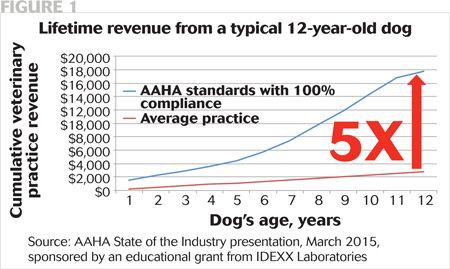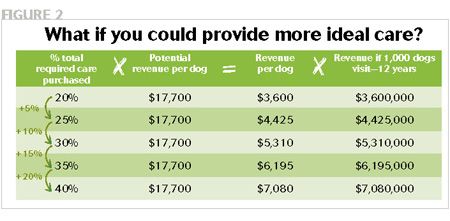Why outside investors want in on the veterinary profession
Economic indicators for veterinary medicine are not all rosy. And still private equity is pouring in to buy veterinary practices. Heres where they see potential.
In a competitive market, money flows toward the best opportunity. Which suggests that veterinary hospitals offer a better return than other types of businesses. Think not? Investors are likely focused on the potential for increased client compliance. In fact, closing the gap between needed care and purchased care offers a five-fold opportunity in revenue growth. And that's enough to get (almost) anyone's attention.

Breaking it down
First, IDEXX recently estimated that, for an average dog living 12 years, total client compliance with American Animal Hospital Association standards of care would produce $17,700 of gross revenue over the dog's lifetime. However, the average veterinary practice currently provides $3,600 in services for that same dog (see Figure 1).
While it's clearly unrealistic to expect you could turn around tomorrow and capture the total value of care required by all pets, it is possible to close the gap. More profitable practices estimate that the lifetime value of care they're providing is more than double that $3,600 figure. And even relatively modest improvements represent considerable growth potential when you look at the total number of pets you see in a year (see Figure 2).

What's holding us back?
Your everyday experience shows there are barriers to overcome. When you adjust for inflation, U.S. household incomes declined over the past two decades. And at the same time, the cost of veterinary care increased at more than twice the pace of other goods and services. So we're seeing a widening gap between the veterinary care pets need and what pet owners will pay for. The future health of the veterinary profession (and those investors' returns) depends on finding effective strategies to close this gap.
